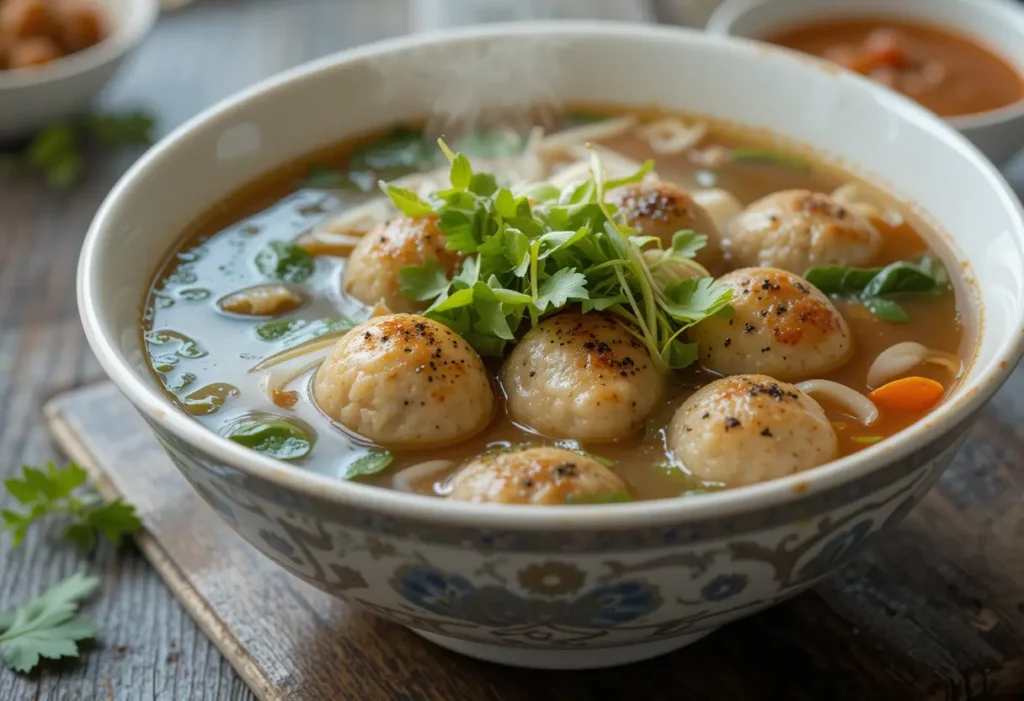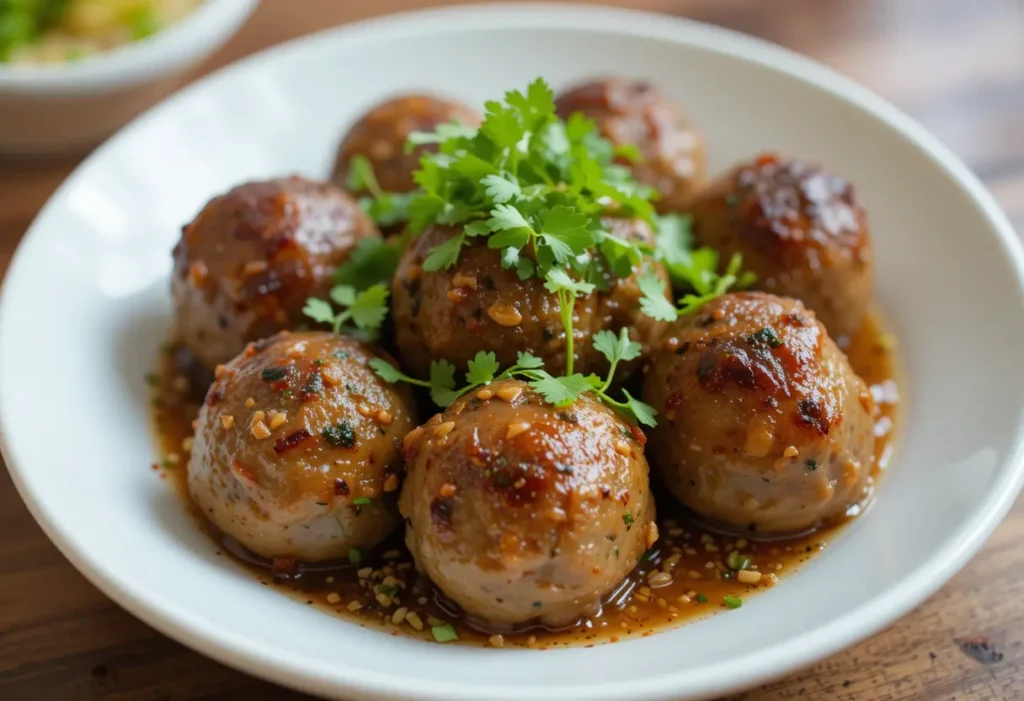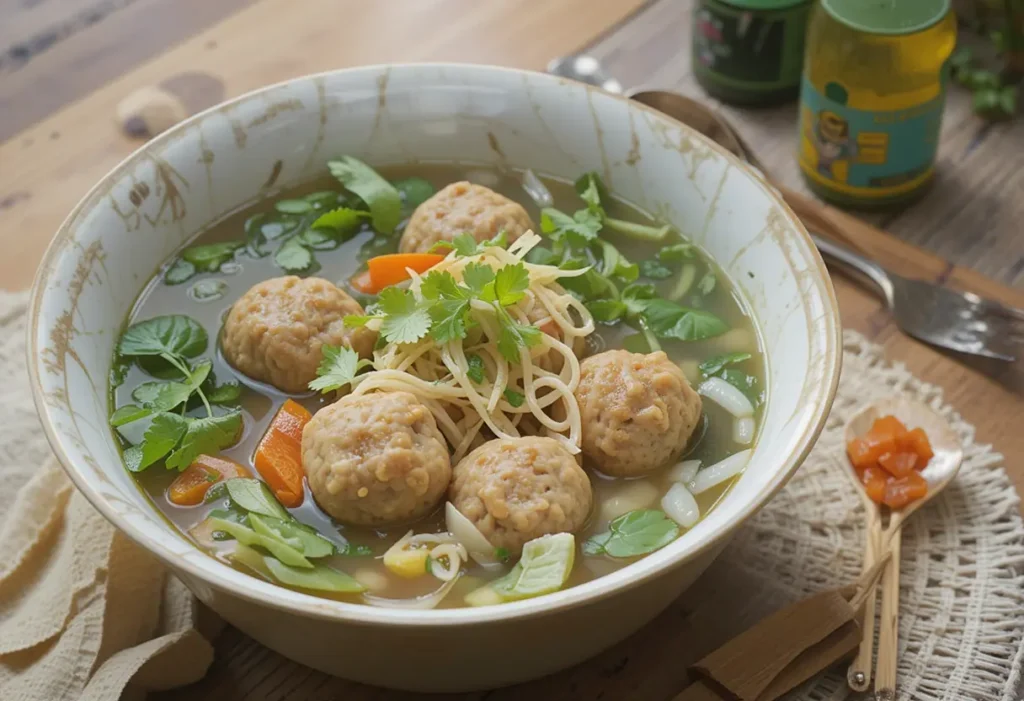Vietnamese meatballs, or Bò Viên, are an essential part of Vietnamese cuisine. Known for their springy texture and rich, savory flavor, these meatballs are enjoyed in various dishes, such as pho, noodle soups, or even as a quick snack. By understanding the ingredients, preparation, and cultural context of these delicious bites, you can truly appreciate what makes them special.
If you are curious about more authentic Vietnamese dishes, don’t forget to check out traditional Vietnamese meatball recipes, which offer great inspiration for your culinary adventures.
Why Are Vietnamese Meatballs Significant?
Vietnamese meatballs, or Bò Viên, are an essential part of Vietnamese cuisine. These meatballs, celebrated for their springy texture and rich flavor, enhance a variety of dishes. People commonly enjoy them in soups, noodle dishes, or even as snacks. By learning about their ingredients, preparation methods, and cultural roots, you can better understand what makes them so special.
If you’re curious about other authentic Vietnamese dishes, check out traditional Vietnamese meatball recipes for delicious culinary ideas.
Why Are Vietnamese Meatballs Significant?
Vietnamese meatballs play a versatile role in the cuisine. Cooks use them to complement meals such as pho and stir-fries, where their unique texture and flavor stand out. In addition to being a staple in many dishes, these meatballs carry cultural importance, often serving as a symbol of comfort food.
For another comforting dish with deep cultural significance, explore Mississippi Chicken.

What Are Vietnamese Meatballs?
Cooks create Vietnamese meatballs by combining finely ground meat with starch, seasonings, and herbs. These small, springy spheres differ from other meatballs due to their elastic texture and bold flavors. Unlike other styles, they incorporate fish sauce, giving them an umami-packed taste.
For dishes that also focus on both flavor and texture, explore the magic of Mongolian beef noodles.
Ingredients in Vietnamese Meatballs
Crafting authentic Bò Viên requires precise ingredient selection. Each component contributes to the final flavor and texture.
Key Ingredients
- Meat: Ground beef, pork, or a mix of both forms the base. Cuts with higher fat content, such as brisket or pork shoulder, produce juicy results.
- Binding Agents: Potato starch or cornstarch binds the meat while creating the iconic elasticity.
- Seasonings:
- Fish sauce: This provides the distinct umami flavor central to Vietnamese cuisine.
- Garlic and onion powder: These add a robust foundation to the flavor profile.
- Sugar: A touch of sweetness balances the savory notes.
- White pepper: This mild spice adds subtle heat.
Optional Additions
- Herbs like cilantro or green onions add a burst of freshness.
- Shrimp or fish serve as excellent alternatives to meat for seafood versions.
- Vegetarian substitutions such as tofu or mushrooms cater to plant-based diets.
These carefully chosen ingredients ensure the final product achieves both the desired taste and texture.
How Are Vietnamese Meatballs Made?
To achieve authentic Bò Viên, cooks rely on specific techniques that emphasize texture and flavor.
Step-by-Step Process
- Combine Ingredients:
- Mix ground meat with starch, fish sauce, garlic, onion powder, sugar, and cold water. Keeping the mixture cold helps preserve its firmness.
- Whip the Mixture:
- Beat the mixture in a stand mixer until it becomes sticky and elastic. This crucial step creates the signature springy texture. If a stand mixer isn’t available, use a mortar and pestle.
- Shape the Meatballs:
- Form small balls with your hands or a scoop.
- Cook the Meatballs:
- Drop the meatballs into boiling water or broth. Once they float, they are fully cooked.
For another dish with unique preparation techniques, consider what makes Mongolian beef special.
Why Are Vietnamese Meatballs Unique?
Vietnamese meatballs stand out due to their springy texture and rich flavor. The whipping process ensures a chewy yet tender bite, while the inclusion of fish sauce adds an umami depth. Compared to other meatball styles, such as Italian or Swedish, Bò Viên are firmer and more elastic.
Additionally, their versatility makes them a favorite in Vietnamese cuisine. Whether served in soups, paired with noodles, or enjoyed as a snack, they fit seamlessly into various dishes.

Variations of Vietnamese Meatballs
One of the best aspects of Bò Viên lies in its versatility. Regional influences and dietary needs inspire several variations:
- Beef Bò Viên: The traditional choice, known for its bold, meaty flavor.
- Pork Bò Viên: A slightly sweeter and softer option.
- Seafood Bò Viên: Shrimp or fish-based meatballs work well in lighter dishes.
- Vegetarian Bò Viên: Tofu or mushrooms replace meat for plant-based diets.
For pairing suggestions with these variations, explore what goes well with New England clam chowder.
Nutritional Benefits of Vietnamese Meatballs
Besides their taste, Bò Viên deliver valuable nutrients. These benefits include:
- Protein: This supports muscle development and repair.
- Iron: It boosts energy levels and improves immune function.
- Low-Carb Options: Using lean cuts of meat and minimal starch keeps this dish keto-friendly.
Tips for Healthier Meatballs
- Choose lean cuts of meat to reduce fat content.
- Use alternative starches like arrowroot for a healthier binding agent.
- Add more vegetables or herbs to increase nutritional value.
How to Serve Vietnamese Meatballs
Cooks serve Bò Viên in numerous ways, depending on the dish or occasion.
Popular Serving Ideas
- In Soups: Add them to pho or other noodle soups to enhance the broth with a protein-packed component.
- With Rice or Noodles: Pair the meatballs with steamed rice or stir-fried noodles for a satisfying meal.
- As a Snack: Serve them with dipping sauces like hoisin, soy, or chili for a quick and flavorful bite.
Pairing Suggestions
- Fresh herbs like cilantro, Thai basil, or mint complement the meatballs well.
- Pickled vegetables provide a tangy contrast.
- A crispy baguette adds a fusion-inspired twist.
For another innovative pairing, consider savory dishes made from bread.
Frequently Asked Questions (FAQs)
Why are Vietnamese meatballs springy?
The whipping process incorporates air into the mixture, creating the characteristic springy texture. Starch also plays a critical role in achieving this elasticity.
Can I substitute beef with other proteins?
Yes, you can replace beef with pork, chicken, or seafood like shrimp. Vegetarian alternatives such as tofu and mushrooms also work well.
How should I store Vietnamese meatballs?
Refrigerate cooked meatballs for up to three days or freeze them for a month. Reheat by simmering them in boiling water or broth.
What makes Vietnamese meatballs different from other meatballs?
The inclusion of fish sauce, along with their chewy texture, distinguishes them from other types like Italian or Swedish meatballs.
Conclusion
Vietnamese meatballs, or Bò Viên, showcase the creativity and rich flavors of Vietnamese cuisine. Their springy texture and bold taste make them a versatile addition to various dishes, from soups to snacks. By mastering the techniques and using high-quality ingredients, you can recreate this delicious experience in your kitchen.
To begin your journey, explore authentic Vietnamese meatball recipes and discover the many ways to enjoy these springy delights.

